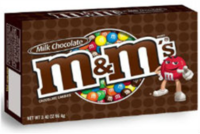Time to Eat the ‘Donuts’
Any mention of the word “doughnut” conjures up an image of Homer Simpson asleep on the job, a half-eaten ring of cake in his hand. One also is reminded of the classic Dunkin’ Donut commercials in which actor Michael Vale makes the store’s fresh “donuts” daily.
For me, these associations are quickly followed by the memory of my mother making homemade doughnuts using a little electric fryer that today is buried somewhere in my parents’ basement amidst old tennis rackets, canned vegetables, holiday decorations and wedding gifts that have yet to be given but were “on sale,” so Mom just couldn’t resist purchasing them.
I can recall countless trips to street fairs where miniature doughnuts rolled in cinnamon sugar were the treat of choice for my dad and me, despite nearby temptations of greasy elephant ears and funnel cakes. (My heart beats a little faster just thinking about these carnie concoctions.)
That said, I’m not a big fan of the hole-in-one treat. Although I am intrigued by Krispy Kreme’s limited-edition pumpkin spice cake doughnuts (perfect for fall), I’m no follower of that carb-laden cult. In my previous life as a furniture magazine editor, I made a twice yearly trek to the International Home Furnishings Market in High Point, N.C., near Winston-Salem, where the KK brand began in 1937. However, I never fell prey to those hot glazed cakes. Sure, they look and taste great, but about 20 minutes after eating just one doughnut — as I’m coming off that sugary sweet high — self-loathing sets in. What was I thinking?
Doughnut addicts are everywhere (just ask the brains behind KK), but perhaps not in the numbers one might suspect. Earlier this year, a survey by Snack Food & Wholesale Bakery indicated that fewer consumers purchase doughnuts in comparison to bagels, for example. But if Dunkin’, Krispy Kreme, in-store bakeries, and Hostess and Entenmman’s are any indication, the doughnut is here to stay.
Some people feel quite strongly about their hole-y rings — and not just the makers of the fryers featured in this issue. I recently heard a news report about some older folks in Mahopac, N.Y., who protested their senior center’s decision to stop serving doughnuts donated by a local bakery. Residents went so far as to form a demonstration, wearing sandwich boards that read “Give us our just desserts” and “They’re carbs, not contraband.”
The only group with a stronger affinity for doughnuts has to be — you guessed it — law enforcement officials. At a recent dinner with Dave Van Laar of Oak State Products, I literally was rolling with laughter at his (tall?) tales about the Los Angeles Police Department. Trite as the cops-in-coffee-shops stereotype might be, Dave’s stories of the LAPD’s fondness for his company’s contract-manufactured doughnuts — which he provided free of charge every month — were hysterical.
Yes, doughnuts can be all-powerful, as VooDoo Doughnuts knows. The Portland, Ore., store’s tagline — “The magic is in the hole” — cracks me up, as does its mission: “Famous for their girth, our doughnuts are made fresh with love and care. You can pay us more for our product, which is locally made, locally owned, and an honest dream come true, or you can buy cheaper, megalacorp, machine cut, rebaked, defrozen, warehouse doughnuts and pastries.”
Among VooDoo’s current offerings are Grape Ape (“a raised doughnut with vanilla frosting and grape powder”), Arnold Palmer (“a cake doughnut covered with lemon and tea powder”), Memphis Mafia (“a chocolate chips/banana/peanut butter/glaze doughnut”) and No Name (“a doughnut so good we couldn’t come up with a better name”). The store hosts a doughnut-eating contest the first Friday of each month and is open 24 hours a day so that junkies always can get a fix.
It appears that there always have been doughnut junkies. According to “The Partially True History of the Doughnut” (www.EllisKaisesr.com), “In the days when fried cakes ruled the earth, life was harsh. The cakes were difficult to fry all the way through, which often left a gooey doughy center.” That doughy center often carried deadly diseases such as the bubonic plague, the Web site adds, from which thousands of people (as well as bakers) died. “Still, people ate and ate, not knowing if their next fried cake would be the last.”
Furthermore, “Doughnuts: A Definitive History” (www.MrBreakfast.com) notes that the first recorded doughnut recipes date back to the mid-19th Century when they were called “olykoeks” or oily cakes. The Dutch created these by frying sweet dough balls in pork fat. The Web site adds that archaeologists have found petrified fried cakes with holes in the center in prehistoric ruins in the Southwestern United States, proof that “the doughnut will outlive us all.”
Mmmmm ... fossilized doughnuts.




